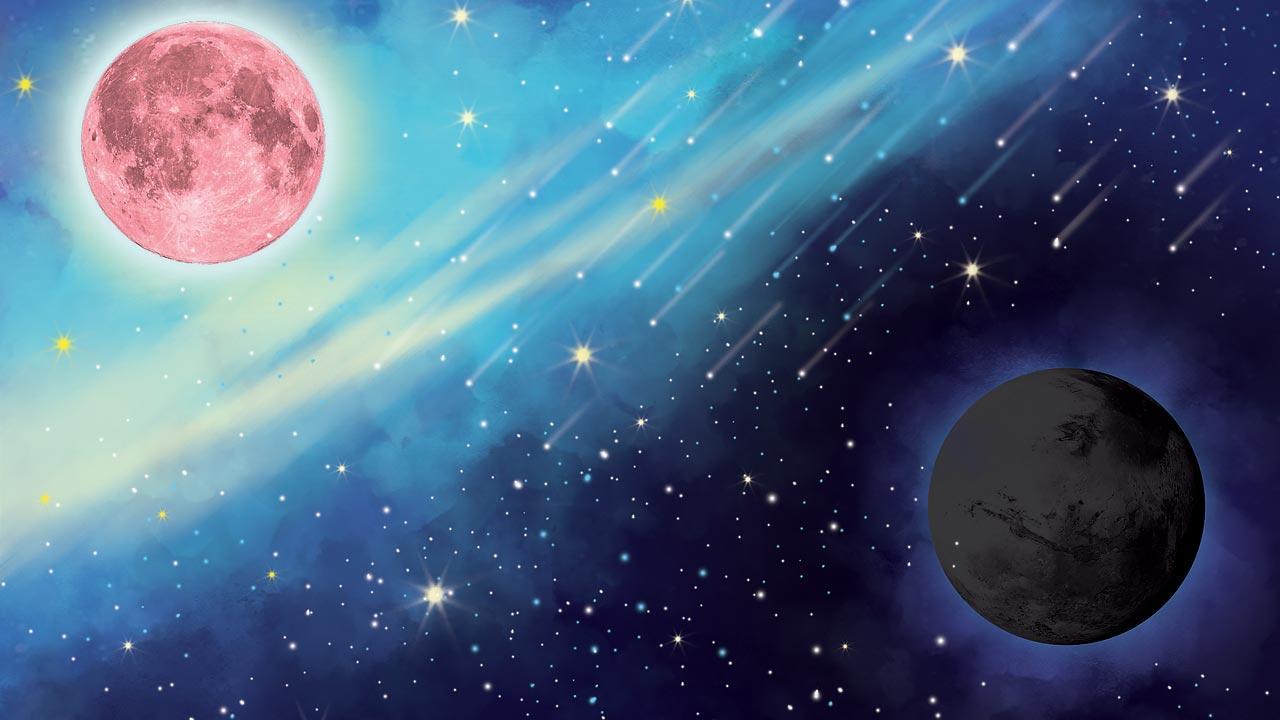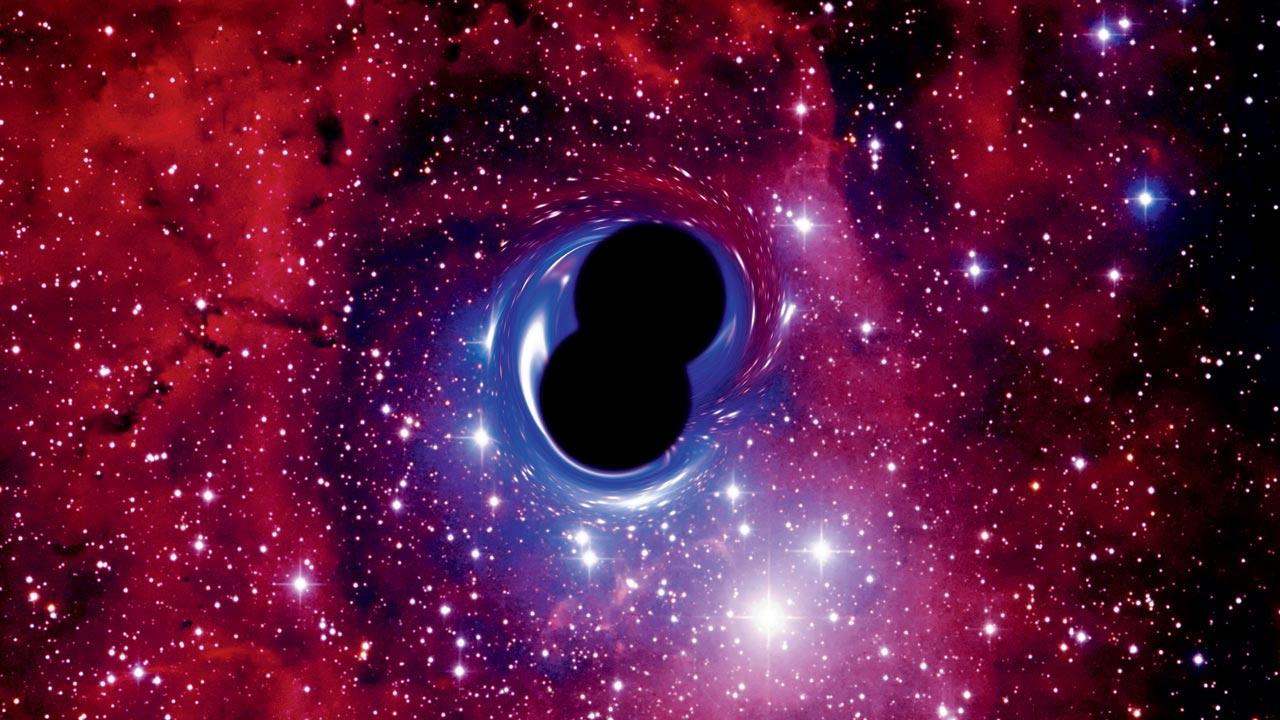This year, the scientific community is celebrating the 100th anniversary of quantum mechanics, which changed our understanding of the universe and might answer some radical questions

Photo Imaging/Uday Mohite
Imagine stepping into a machine, pressing a few buttons, and emerging in a different century. What once existed purely in the imagination of science fiction authors is now increasingly entering the domain of scientific possibility. The idea of time travel—moving forward or backward through time—has captured human curiosity for generations. In tandem, the mysterious concept of dark energy—an unseen force accelerating the expansion of the universe—has become one of the most important puzzles in modern physics. It’s no coincidence that conversations about time travel and dark energy have surged during this symbolic year. In January 2025, a transatlantic consortium of European and American physicists announced a collaborative quantum simulation project (total cost USD 5.5 million) aiming to model dark energy using next-generation quantum processors—an exemplar of the growing nexus between quantum mechanics and cosmological inquiry. As 2025 has been formally designated the International Year of Quantum Science (IYQS), the global scientific gaze is now firmly affixed upon the quantum arena, which may well harbour the elusive resolutions to some of the universe’s most profound ontological riddles.
Time travel has mesmerised both the public and physicists, but modern science suggests that it may be theoretically possible. Albert Einstein’s general theory of relativity (1915) remoulded our understanding of time and space by showing that time is not a fixed constant. Instead, it can stretch or compress depending on gravity and velocity. This led to the phenomenon of time dilation, which is now a proven effect. Astronauts on the International Space Station age just a little bit more slowly than those on Earth due to their speed and distance from Earth’s gravity. More exotic ideas come from concepts such as wormholes—hypothetical tunnels in space-time that could potentially connect two different points in time or space. These ideas are based on solutions to Einstein’s equations but remain highly speculative due to stability issues and the need for exotic matter with negative energy.
A major development in recent years was a 2020 mathematical model developed by physicists Germain Tobar and Fabio Costa at the University of Queensland. Their work used closed timelike curves (CTCs), theoretical loops in space-time that could permit backward travel in time. Their study demonstrated that time travel might not necessarily lead to paradoxes, as the universe could self-correct to maintain consistency. This supports the Novikov principle, which states that time travel cannot change past events in a way that creates contradictions.
 Dark energy represents one of the most profound mysteries in cosmology. Representational pic/iStock
Dark energy represents one of the most profound mysteries in cosmology. Representational pic/iStock
Quantum experiments have also clarified time-like behaviour. In 2019, IBM researchers simulated a reversal of time on a quantum computer. Though not actual time travel, this experiment demonstrated the ability to manipulate time-like states in quantum systems. It also underlined the powerful role of quantum computing in modelling temporal phenomena. Still, time travel raises fundamental concerns, including paradoxes like the grandfather paradox—where someone travels back in time and prevents their own existence. The many-worlds interpretation of quantum mechanics offers a potential solution, suggesting that alternate timelines or universes are created with each action, thereby bypassing inconsistencies.
Dark energy represents one of the most profound mysteries in cosmology. First proposed in the late 1990s, it was discovered through observations of distant Type Ia supernovae that revealed an accelerating universe. This defied expectations, as scientists had assumed gravity would eventually slow the expansion. Now, dark energy is believed to comprise approximately 68% of the total energy in the universe.
Unlike dark matter, which exerts gravitational influence and clusters around galaxies, dark energy appears to be uniformly distributed throughout space and exerts a repulsive force. This force accelerates the expansion of the universe, pushing distant galaxies beyond our observable reach. Despite its profound impact, the origin and nature of dark energy remain one of the greatest mysteries in modern physics. A leading hypothesis is that dark energy corresponds to the cosmological constant—a fixed energy density intrinsic to the vacuum of space.
The 2023 launch of the Euclid space telescope by the European Space Agency marked a major event in the quest to understand dark energy. Over the past decade, numerous observational and experimental programs have expanded our knowledge of this enigmatic component of the cosmos. In February 2025, Euclid released its first set of high-resolution cosmological maps, capturing data from more than 1.5 billion galaxies. These early results have already revealed subtle discrepancies with the Lambda Cold Dark Matter model, hinting at the possibility of new physics beyond our current framework. Euclid is specifically designed to measure the shapes and redshifts of billions of galaxies with exceptional precision, allowing scientists to map the large-scale structure of the universe and rigorously test dark energy models.
Complementing this effort is the upcoming Vera C Rubin Observatory and its ambitious Legacy Survey of Space and Time (LSST), which is set to begin full operations in 2025. Over the next decade, LSST will collect dynamic data on billions of celestial objects, offering an unprecedented window into the evolving universe.
Meanwhile, in particle physics, researchers are investigating whether quantum vacuum fluctuations contribute to dark energy. Experiments like those examining the Casimir effect and vacuum polarisation are designed to probe the quantum properties of empty space, potentially linking quantum theory to cosmic expansion. Alternative models such as quintessence (a dynamic scalar field) or modified gravity theories are being rigorously tested, thanks to advances in computational modelling and high-energy physics data. Dark energy also relates directly to the arrow of time—the idea that time flows in a particular direction. Some scientists hypothesise that changes in the universe’s expansion rate could influence the flow of time itself. If dark energy could be controlled or better understood, it might answer whether time travel is feasible through cosmic-scale phenomena like stabilised wormholes.
Quantum mechanics, though counter-intuitive, is increasingly essential for understanding the universe. Quantum entanglement, where particles remain correlated across vast distances, has transfigured communication and computation. The 2015 Nobel Prize in Physics validated entanglement by disproving classical local realism. Since then, China’s Micius satellite has demonstrated quantum teleportation over 1,200 kilometres, advancing the dream of a quantum internet. Quantum computing has begun to transform our understanding of space-time. In 2019, Google’s Sycamore processor achieved quantum supremacy, solving in 200 seconds a problem that would take classical supercomputers millennia. These machines are now simulating black holes, particle behaviour, and even time-reversal dynamics, revealing the underlying processes of quantum evolution.
The quest for quantum gravity continues through approaches like loop quantum gravity and string theory, which propose that space-time may be discrete and quantised. These theories could shift our perception of the universe’s origin and whether time travel is possible within higher-dimensional constructs. Meanwhile, time travel remains theoretical but settled in serious physics—through closed timelike curves, rotating black holes, and wormholes. Stabilising such structures may require exotic matter, as suggested by semiclassical corrections and the AdS/CFT framework. Observatories like Euclid and Rubin aim to probe whether dark energy stems from vacuum energy or scalar fields like quintessence. Quantum field theories in curved space-time and modified gravity models offer potential unification routes. As 2025 unfolds, quantum science may not just explain the cosmos—it could redefine it.
Whether or not humanity ever steps into a time machine, the journey through quantum science is itself a voyage through the very fabric of reality. As new discoveries develop, they will not only reshape our understanding of the universe, but of time itself.
Nishant Sahdev is a theoretical physicist at the University of North Carolina in Chapel Hill, United States. He can be contacted at nishantsahdev.onco
@gmail.com
 Subscribe today by clicking the link and stay updated with the latest news!" Click here!
Subscribe today by clicking the link and stay updated with the latest news!" Click here!








